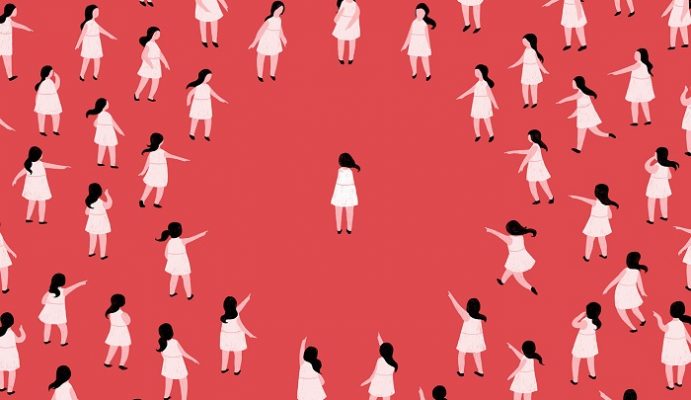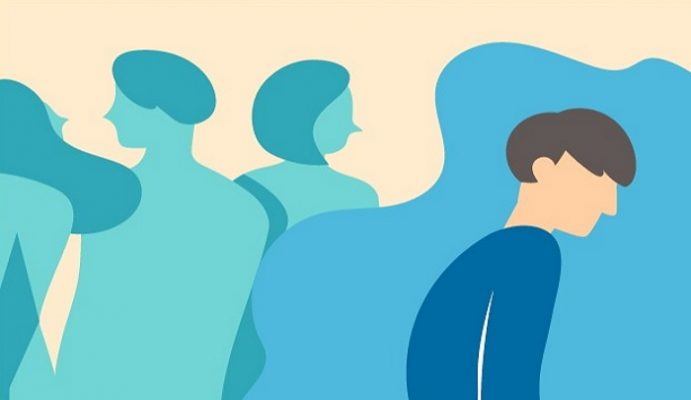پرسشنامه اضطراب اجتماعی بزرگسالان (SAQ-A30)
اضطراب اجتماعی بعنوان یکی از انواع اختلالات اضطرابی شناخته می شود که در صورت عدم درمان تمام عمر همراه فرد خواهد ماند. این اختلال بعنوان ترسی ثابت و شدید در فرد شناخته می شود که حین مواجهه با افراد ناشناس، انجام فعالیت های اجتماعی، یا کارهای جمعی پدیدار می شود.
اضطراب اجتماعی یکی از رایجترین انواع اختلالات اضطرابی محسوب شده و حدود ۳ تا ۲۰ درصد کل جمعیت در کشورهای مختلف به آن دچار هستند. ابزارهای سنجش شامل انواع پرسشنامه اضطراب اجتماعی بزرگسالان هستند.
پرسشنامه اضطراب اجتماعی بزرگسالان (SAQ-A30)
یکی از مشکلات عمده این اختلال، اشتباه گرفتن آن با رگههای شخصیت درونگرا است. رفتارهای افراد دارای اختلال اضطراب اجتماعی توسط خودشان و دیگران اغلب به عنوان شرم، حیاء و ملاحظه کاری تفسیر می شود. در حالی که این اختلال از موارد پیش گفته کاملاً متمایز است.
اولین گام برای غلبه بر اضطراب اجتماعی شناسایی و سنجش آن توسط ابزارهای مناسب است. یکی از این ابزارها، پرسشنامه اضطراب جدایی بزرگسالان (SAQ-A30) است که کارایی آن در کشورهای مختلف به اثبات رسیده و ابعاد گوناگون اضطراب اجتماعی را می سنجد.
ساختار پرسشنامه اضطراب اجتماعی بزرگسالان (SAQ-A30)
پرسشنامه اضطراب اجتماعی بزرگسالان (SAQ-A30) حاوی ۳۰ گویه خبری است که پاسخگویان در قالب نظام لیکرت ۵ بخشی (۱: به هیچ وجه، ۵: بشدت) میزان موافقت خود را با هر گویه مشخص می نمایند.
نمرات پرسشنامه اضطراب اجتماعی بزرگسالان در پنج بخش ۶ گویهای صحبت در جمع/ صحبت با مراجع قدرت؛ تعامل با جنس مکمل؛ ابراز جراتمندانه آزردگی، اشمئزاز، یا ناراحتی؛ انتقاد و خجالت؛ و تعامل با غریبهها تقسیم شده اند.
هنجاریابی پرسشنامه اضطراب اجتماعی بزرگسالان (SAQ-A30)
ثبات درونی پرسشنامه اضطراب اجتماعی بزرگسالان با محاسبه آلفای کرونباخ کل پرسشنامه به میزان ۰٫۹۲ تا ۰٫۹۳ و برای خرده مقیاسها بین ۰٫۷۵ تا ۰٫۹۲ در نسخه اصلی محاسبه شده است.
پایایی دو نیمه سازی گاتمن برای پرسشنامه اضطراب اجتماعی بزرگسالان بین ۰٫۹۰ تا ۰٫۹۳ بدست آمده است. در هنجاریابی فارسی پرسشنامه اضطراب اجتماعی بزرگسالان، آلفای کرونباخ برای خرده مقیاس صحبت در جمع/ صحبت با مراجع قدرت ۰٫۸۱؛ تعامل با جنس مکمل ۰٫۸۴؛ ابراز جراتمندانه آزردگی، اشمئزاز، یا ناراحتی ۰٫۷۴؛ انتقاد و خجالت ۰٫۷۴؛ و تعامل با غریبهها ۰٫۷۷ بدست آمد. همچنین آلفای کرونباخ کل پرسشنامه در نسخه فارسی ۰٫۹۲ محاسبه شد.
برای بررسی ساختار عاملی پرسشنامه اضطراب اجتماعی بزرگسالان نیز از روش تحلیل مولفه اصلی با چرخش واریماکس استفاده شد که نشانگر ۵ عامل متمایز در گویه های پرسشنامه SAQ-A30 است.

What is social anxiety disorder?
Social anxiety disorder is a common type of anxiety disorder. A person with social anxiety disorder feels symptoms of anxiety or fear in certain or all social situations, such as meeting new people, dating, being on a job interview, answering a question in class, or having to talk to a cashier in a store.
Doing everyday things in front of people—such as eating or drinking in front of others or using a public restroom—also causes anxiety or fear. The person is afraid that he or she will be humiliated, judged, and rejected.
The fear that people with social anxiety disorder have in social situations is so strong that they feel it is beyond their ability to control. As a result, it gets in the way of going to work, attending school, or doing everyday things.
People with social anxiety disorder may worry about these and other things for weeks before they happen. Sometimes, they end up staying away from places or events where they think they might have to do something that will embarrass them.
Some people with the disorder do not have anxiety in social situations but have performance anxiety instead. They feel physical symptoms of anxiety in situations such as giving a speech, playing a sports game, or dancing or playing a musical instrument on stage.
Social anxiety disorder usually starts during youth in people who are extremely shy. Social anxiety disorder is not uncommon; research suggests that about 7 percent of Americans are affected.
Without treatment, social anxiety disorder can last for many years or a lifetime and prevent a person from reaching his or her full potential.

What are the signs and symptoms of social anxiety disorder?
When having to perform in front of or be around others, people with social anxiety disorder tend to:
- Blush, sweat, tremble, feel a rapid heart rate, or feel their “mind going blank”
- Feel nauseous or sick to their stomach
- Show a rigid body posture, make little eye contact, or speak with an overly soft voice
- Find it scary and difficult to be with other people, especially those they don’t already know, and have a hard time talking to them even though they wish they could
- Be very self-conscious in front of other people and feel embarrassed and awkward
- Be very afraid that other people will judge them
- Stay away from places where there are other people
What causes social anxiety disorder?
Social anxiety disorder sometimes runs in families, but no one knows for sure why some family members have it while others don’t. Researchers have found that several parts of the brain are involved in fear and anxiety.
Some researchers think that misreading of others’ behavior may play a role in causing or worsening social anxiety. For example, you may think that people are staring or frowning at you when they truly are not.
Underdeveloped social skills are another possible contributor to social anxiety. For example, if you have underdeveloped social skills, you may feel discouraged after talking with people and may worry about doing it in the future.
By learning more about fear and anxiety in the brain, scientists may be able to create better treatments. Researchers are also looking for ways in which stress and environmental factors may play a role.


